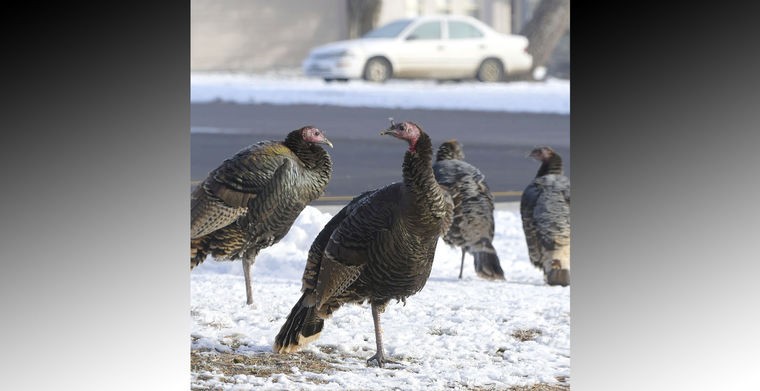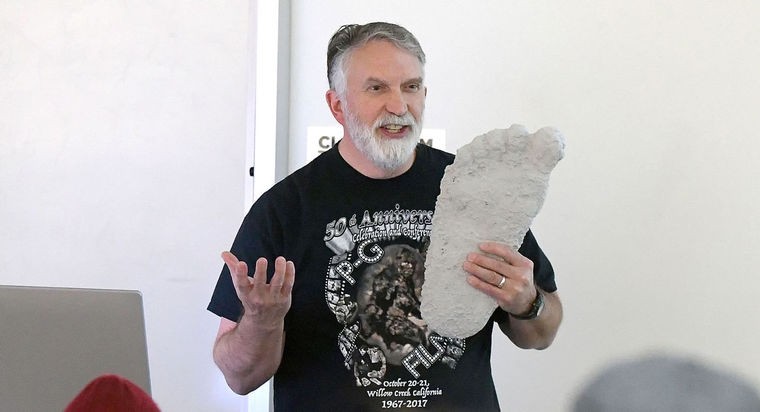MENDON — Seeing five or six wild turkeys trot from yard to yard used to be a novelty in Mendon. Then they started multiplying.
“Then all of a sudden there’s 50 the next year, then there’s 100 the next year, and then there’s 500 the next year,” Mayor Ed Buist said. “Not a novelty anymore.”
They’re hard to miss. Packs of birds, dozens at a time, can be found pecking at grass, walking across the street and leaving behind a trail of waste throughout the small, rural town. Buist said the turkeys end up causing property damage, but there’s not much he can do to protect his residents.
Only the Utah Division of Wildlife Resources can trap wild turkeys or issue hunting permits to thin their numbers.
Mendon resident Barbara Obray said she’s called DWR to encourage them to trap turkeys in the area. She said she grew up in Mendon and never saw a wild turkey within city limits until about 15 years ago.
At first, they would come down from the mountains in the winter to find food before heading back to the hills.
Now, they seem to be a perennial pest.
“Our group just keeps getting bigger every year because they don’t get shot or anything,” Obray said.
She said she’s counted 70 wild turkeys in her yard at once, while some of her neighbors have reported more than 100 at a time. She said the fowl drive off pheasants, demolish bird feeders, scratch at hay bales, eat flowers and destroy gardens.
But she’s more concerned about the “leftovers” they produce.
“The main thing is just the poop they leave behind as they go from one yard to the next,” Obray said.
Phil Douglas, DWR’s conservation outreach manager for the northern region, said the problem is much bigger than Mendon. Wild turkeys can be found throughout Cache County and beyond.
“We have turkey depredation issues really all throughout the state,” Douglas said.
He said there are three basic approaches to handling wild turkeys. The first option is to prevent conflicts between humans and wildlife by keeping them out of urban areas. Douglas said DWR has planted oats on the west side of Mendon to feed the turkeys and prevent them from heading into town to look for food. He said that has worked in the past.
The second option is trapping, of which there are two main types. A walk-in trap can handle 15 to 20 at a time, while a drop-net trap can round up 50 birds. Douglas said DWR crews are getting ready to start trapping. The cold weather and snow helps concentrate the birds in certain areas, making them easy to trap in groups.
“Cold temperatures and the snow that we just received will certainly mark the increased presence of turkeys in these areas,” he said.
The third option is issuing fall hunting licenses. Douglas said DWR is “fairly liberal” in issuing fall hunting permits to property owners in agricultural areas where appropriate.
Douglas said the public is welcome to call the DWR northern region office at 801-476-2740 with any questions or concerns.

